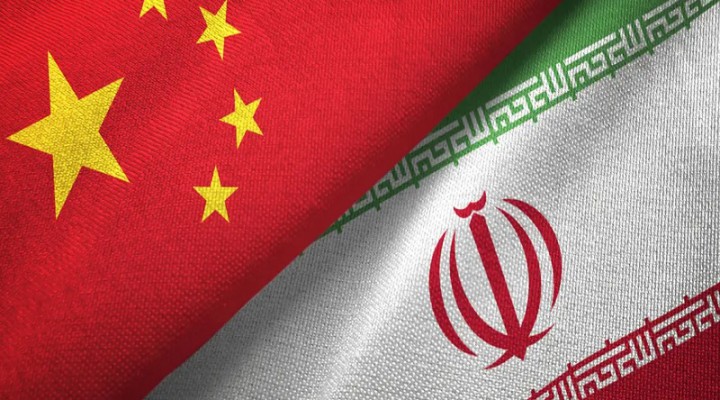Chinese-Iranian Overland Connectivity Is Slowly But Surely Being Streamlined

The grand strategic trend is that Iran is reorienting itself towards the East in line with the rest of the world as all key players in the global systemic transition to multipolarity begin focusing much more on Asia.
The Middle Corridor (MC) between China and Turkey via Central Asia, the Caspian Sea, and the South Caucasus has emerged as one of the most pivotal Eurasian transport routes since the start of Russia’s ongoing special military operation in the Ukraine and the unprecedented US-led West’s anti-Russian sanctions that were imposed upon it in response. The consequence of recent events has been that the Eurasian Land Bridge (ELB) has indefinitely become unviable for facilitating Chinese-EU trade, hence the need to rely more on the MC as a workaround for the foreseeable future.
What’s so special about the MC is that its Central Asian portion generally overlaps with the China-Central Asia-West Asia Economic Corridor (CCAWAEC), which is one of the Belt & Road Initiative’s (BRI) envisioned routes through Eurasia and can casually be referred to as the Central Asian Corridor (CAC). In particular, it’s planned to connect China with Iran via Central Asia and then onwards to Turkey and the EU. It’s important to point out in this respect that the Islamic Republic signed a 25-year strategic partnership pact with the People’s Republic last year that’ll certainly add a lot of impetus to this project.
Three recent developments confirm that overland connectivity between these multipolar Great Powers is slowly but surely being streamlined. First, Iran’s Deputy Transport and Urban Development Minister announced in late February that his country plans to expand the Khaf-Herat (KH) railway with Afghanistan all the way to China. It’s unclear exactly which route this could take, but the second development that just happened earlier this month suggests that it could be via Uzbekistan and Kyrgyzstan.
China’s National Development and Reform Commission said at the time that construction on the long-planned China-Kyrgyzstan-Uzbekistan (CKU) railway will begin next year. According to Global Times’ report, “The railway will be the shortest route to transport goods from China to Europe and the Middle East, cutting the journey by 900 kilometers and saving seven to eight days of travel time.” In theory, these two railways could connect with one another in Uzbekistan to actualize the CAC between China and Iran.
Another alternative path could be via Turkmenistan, which already has rail connectivity with both Iran and Uzbekistan. In fact, it was back in 2016 that the first train arrived in Iran from China via Kazakhstan, Uzbekistan, and Turkmenistan. This route between Yiwu and Tehran was reported to be a full 30 days shorter than sailing between Shanghai and Bandar Abbas. Nevertheless, it still wasn’t as direct as the potential convergence of the KH and CKU railways in Uzbekistan and/or a more modern Iranian-Turkmen railway connecting with the CKU in that doubly landlocked country.
Even in the absence of a modernized rail line connecting Iran to Uzbekistan via Afghanistan and/or Turkmenistan, the third pertinent development to be touched upon in this analysis suggests that everything will speed up regardless. Around the same time that the CKU’s planned construction next year was announced earlier this month, it was also reported that Turkmenistan agreed to streamline the transit of Iranian and Uzbek cargo across its territory. This importantly preceded the new Turkmen President’s visit to Iran this week, during which time they signed nine cooperation documents.
What’s so important about the slow but steady progress being made on the CAC between China and Iran, which builds upon some parts of the MC, is that it serves more strategic purposes than just linking together those two multipolar Great Powers. Not only does it provide the Central Asian Republics (CARs) with an outlet to the global ocean via Iran, but it can also simultaneously be employed by India as part of the eastern branch of its North-South Transport Corridor (NSTC) with Iran for accessing those landlocked countries.
Iran is therefore positioning itself to be at the center of Eurasia’s multidirectional integration processes with respect to China, India, and Central Asia. The CAC, in whichever form(s) is ultimately takes, will connect it more closely with China and the CARs while also serving to enable India to integrate this infrastructure into the NSTC’s eastern branch. On a broader level, it can also place the Islamic Republic in the middle of Chinese-EU trade in the event that the CAC ultimately expands through Turkey en route to that bloc as well trade between the CARs on one hand and Africa and West Asia on the other.
The grand strategic trend is that Iran is reorienting itself towards the East in line with the rest of the world as all key players in the global systemic transition to multipolarity begin focusing much more on Asia. This trajectory speaks to the wisdom of its leadership for rightly prioritizing this aspect of its Eurasian policy over others at this pivotal moment in International Relations. It’ll certainly take time to actualize and there might be some unexpected twists and turns along the way, but altogether, observers should be optimistic about the long-term prospects of Iran’s new grand strategic direction.
 TheAltWorld
TheAltWorld 
0 thoughts on “Chinese-Iranian Overland Connectivity Is Slowly But Surely Being Streamlined”